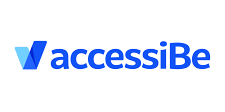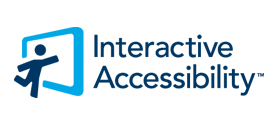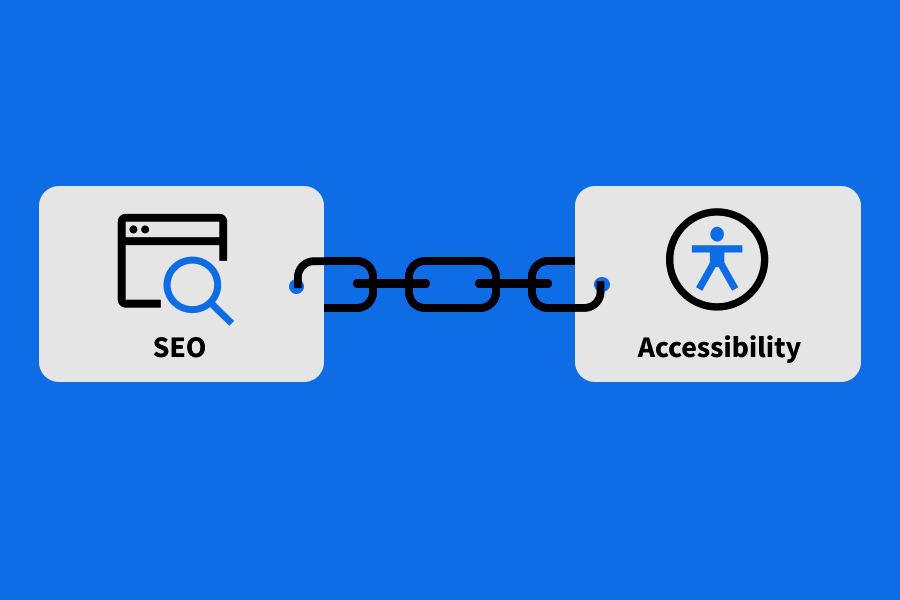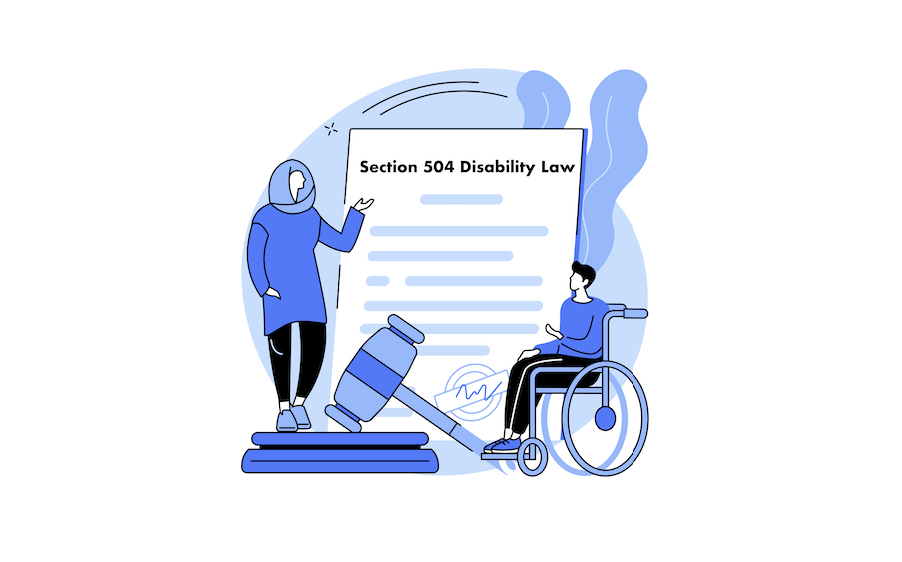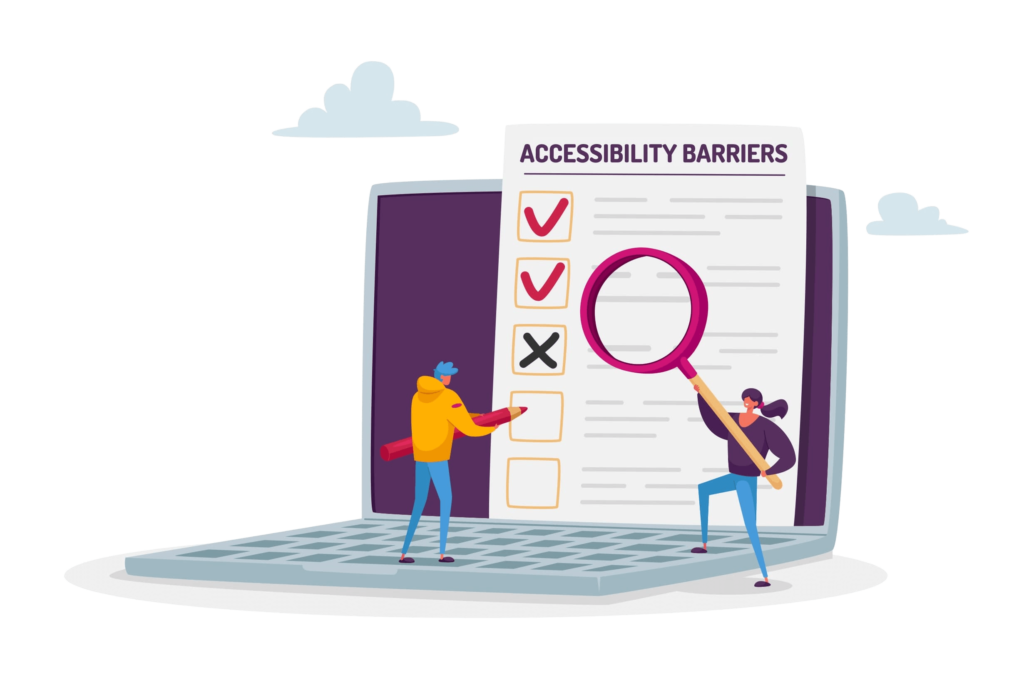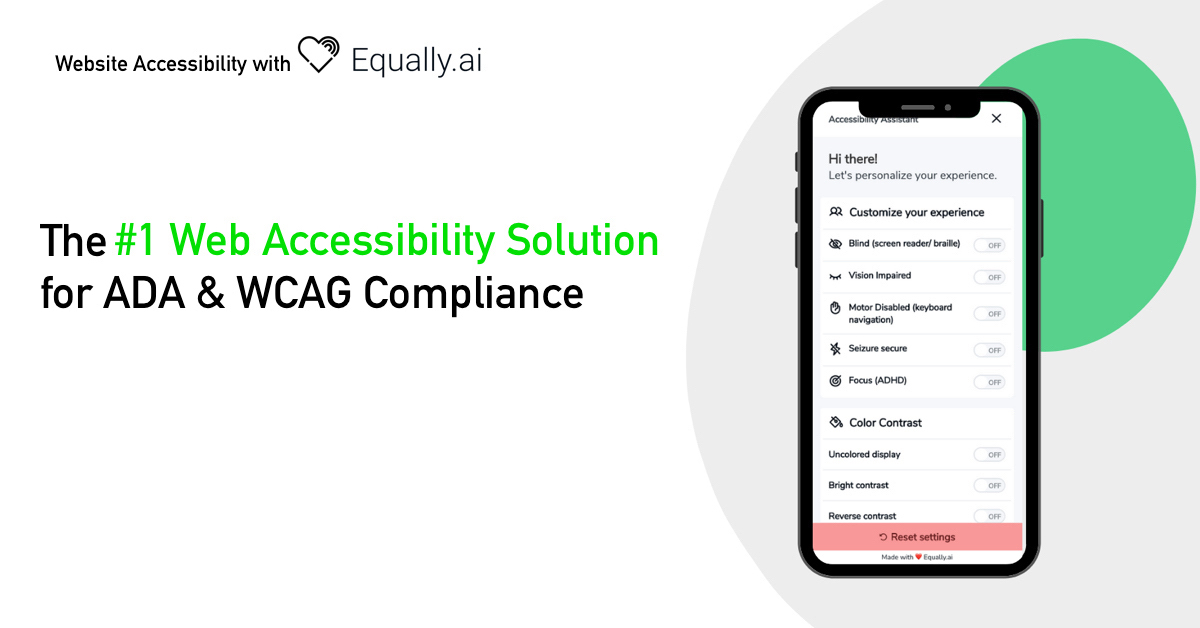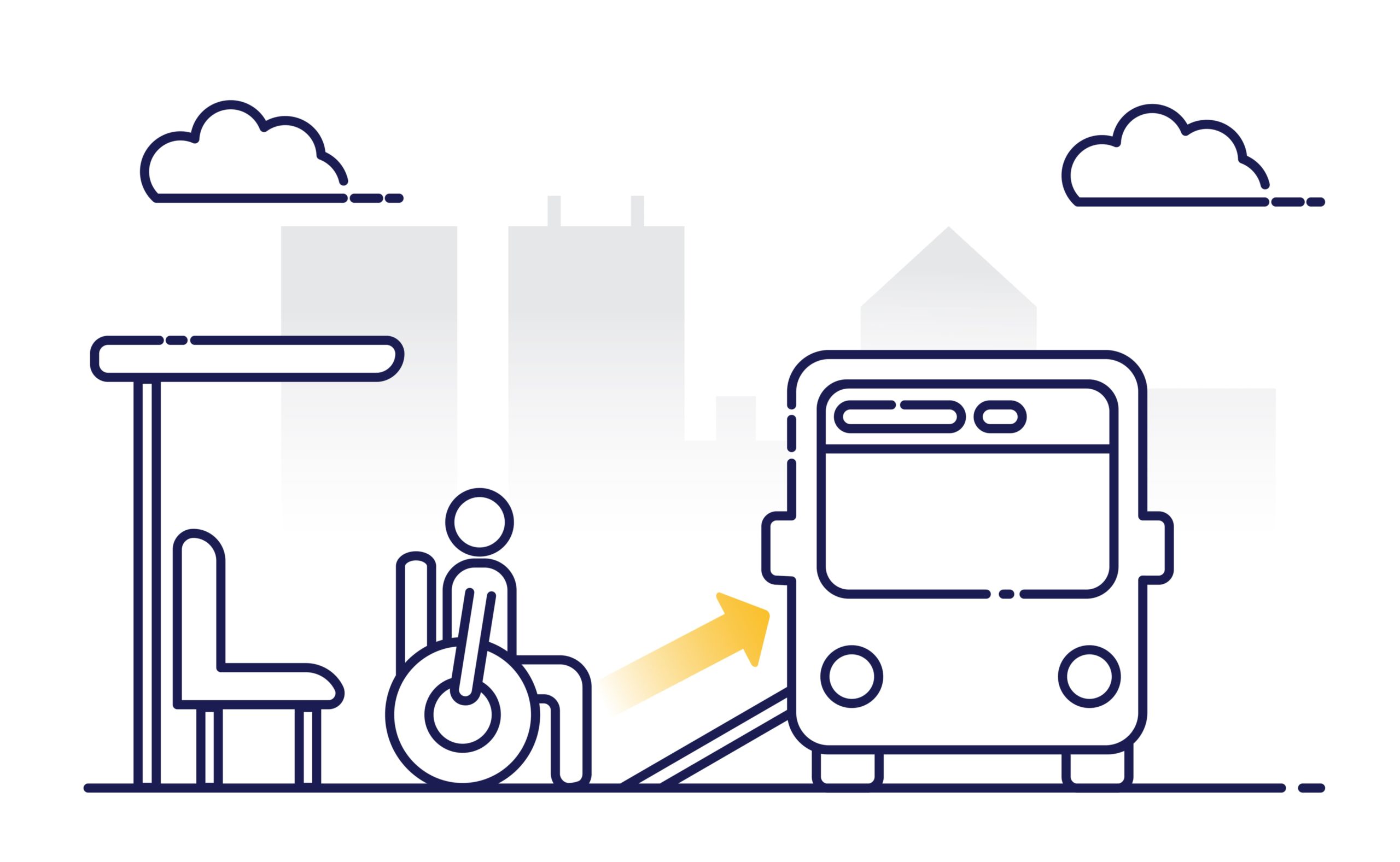
Leading automotive, aviation and transportation companies need to fulfill certain accessibility requirements in today’s day and age. The goal is to continue focusing on their core business of providing quality transportation and logistics solutions not only to their customers but also to people with impairments. In this article, we will be discussing the specifics of Automotive and Transportation Accessibility.
An Introduction to Accessibility in Transportation
The more established your transportation-related business is, the more legal exposure you may have for operating digital content and apps with possible accessibility violations.
Here you can see what accessibility solutions you can get access to make your automotive, aviation, and transportation company more accessible and inclusive!
Imagine that you have a long to-do list for the day, including a trip to work, shopping, childcare, and maybe a restaurant or entertainment venue. Today, unlike every other day, you have the option of going to one of two major cities to satisfy these needs. It’s possible to go to all the places you need to go in both regions, but the first one has less traffic, quicker roadways, and more rapid transportation.
Initially, mobile location seems preferable. You can’t just judge your ability to meet your needs by looking at the distances between points A and B. The second zone, with slower speeds, provides a more direct route to your destinations, even though the distances between them are shorter. In this case, choosing the second region based on proximity and travel time is the most convenient option. Even so, you’ve chosen an area deemed inefficient by the current transportation planning system.
When looking at transportation results during the past half-century, mobility-based evaluation has been the norm. Transport and land-use planning should be based on accessibility rather than mobility.
For both public and commercial ground transportation operators, the Americans with Disabilities Act (ADA) is applicable. The U.S. Department of Transportation is in charge of enforcing transportation-related ADA regulations.
What Are The Automotive and Transportation Accessibility Requirements?
Private and public organizations both have to meet ADA regulations. If a public entity enters an agreement with a private one regarding transportation services, it has to meet ADA specifications. Legislation pertaining to private providers of transportation such as taxis and private buses is also discussed.
A system’s information for public transport for passengers must be accessible to people with all forms of disability (e.g. information in large print, braille, or alternative and electronic format).
Securement devices (such as straps for fastening wheelchairs onboard), lifts, ramps, signs, and communication devices all need to be in excellent working order to be accessible. If an option isn’t working properly, it has to be fixed immediately. In the meanwhile, an accessible vehicle or substitute must be available.
People Living with Impairments

Additionally, people with disabilities must have enough time to enter and disembark public transportation vehicles. People with impairments can travel with their service animals in automobiles and other establishments that accept them. Any guide dog, signal dog, or other animals specially trained to offer help to a person with a disability qualify as service animals under DOT ADA requirements. This is regardless of whether the animal has been licensed or certified by a local or state government.
Priority seats and signage on fixed-route systems (those that follow a predetermined route) are a must for passengers with disabilities. People with disabilities must have at least one row of seats facing forward designated as priority seating.
Each private and public transportation provider must make sure their employees have proper training in order to operate equipment and vehicles safely. Also, assistance should be provided to people with disabilities in a courteous and respectful manner. They must also understand that people with disabilities have different capabilities, and thus require different kinds of assistance.
Architectural Requirements
The term “fixed-route” refers to a transportation system that follows a set route and timetable at all times. Cities, over-the-road bus services, commuters, subways, and light rail, as well as intercity rail transportation, are all examples of fixed-route public transit systems. Any other mode of transportation can be considered a demand-responsive system. Taxis, limousine services, van services, and shuttle bus systems are all examples of demand-responsive transportation. Therefore, requirements for fixed-route services include:
1. Stop announcements
In order for those with visual impairments to know where they are, stop announcements must be in place at junctions, points of transfer, and other locations. Additionally, if a passenger with a handicap requests a halt, the driver must make an announcement.
2. Route Identification
On the boarding and front sides and of a vehicle, information about its destination and the path it will take need to be provided. On the route information signs, the numbers and letters must be of the correct size to read clearly. There must be an announcement of the destination and the path used to get there.
3. Boarding Devices
Boarding devices (e.g. a lift or ramp) are necessary for passengers who use wheelchairs or other mobility devices to board a vehicle. Wheelchairs must be able to fit on lift platforms that are 30 inches wide by 48 inches deep.
4. Stepwells and Doorways
In automobiles, step-wells and doors need to be lighted for safety reasons. Slip-resistant surfaces are required on doors and steps. In order for passengers to board the bus, fareboxes must be situated in a way that does not hinder the flow of passengers.
5. Handrails, pull cords, and turning space
Turning and maneuvering space for wheelchairs must be provided via railings and pull cords. There must be handrails and stanchions (vertical railings) in the vehicle. Disabled people should have easy access to a stop control, such as a button or cable.
Additional Public Transportation Options
For all fixed-route service regions, ADA-compliant paratransit service must be offered. Transit authorities can decide whether to provide door-to-door or curb-to-curb service. A driver helps customers go from their residences to the van and back again in order to provide door-to-door service. Customer assistance at the curb is part of the Cradle-to-Cradle service. If a client is unable to get beyond the curb, has physical barriers in their path, or is facing terrible weather, drivers may be forced to assist them in getting to the door.
ADA Paratransit Service Minimum Requirements
What you need to take into account when looking at ADA Paratransit Service Minimum Requirements are these three factors:
- Services are often available within a 3-quarter-mile radius of a defined route. Same service hours and days as the established route
- The fee cannot be more than double what a person paying full ticket would be paid for fixed-route travel of the same length and time of day on the same route. The cost of a personal care attendant is exempt
- After receiving a prior day’s request for assistance, paratransit must be available at any time on that day. If a call to the transportation provider results in a same-day pickup, it is permitted but not required
What about Private Trnasportation?
It is required by law that private transportation services be accessible to people with disabilities. The ADA covers private entities such as hotel shuttles, airport shuttles, taxis, Over the Road Bus (OTRB) companies, and private buses.
If an OTRB firm offers a fixed route service, accessible vehicles must be provided. Firms that respond to demand (i.e. charter/tour buses) must accommodate passengers with disabilities 48 hours in advance.
Those with special needs who travel with others should be able to expect the same level of service from private transportation providers who use vehicles that don’t fit their needs. Accessible vehicles are expected to be just as fast and cost-effective as regular vehicles when it comes to commuting to and from their destinations. Needs such as these include, among other things:
- Routing service Schedules
- Response time (for demand responsive service)
- Fares
- Service area
- Service hours & days
- Reservations capacity
- Service availability or capacity constraints
- Priorities/restrictions for trips
- Taxi companies are exempt from wheelchair accessibility requirements. Only accessible vehicles can be purchased or leased by taxi services. Having an accessible taxi fleet does not necessitate a taxi service operator purchasing non-cars.
- Private taxi companies cannot charge non-disabled passengers non-discriminatory fares and fees, even if they refuse service to people with disabilities who can use taxi vehicles or use service animals.
Transit Facilities
The U.S. Department of Transportation has created accessibility criteria for transportation facilities, intermodal hubs, rail terminals, and platforms. It is necessary to comply with these regulations whether building a new facility or making changes to existing ones. These are the things you need to look at when achieving full accessibility:
- Bridge plates and boarding ramps
- Bus shelters
- Doors, escalators, elevators, and emergency alarms
- Parking, fares, grade crossings, turnstiles, and gates.
- Rescue/assistance areas, passenger drop-off areas, and platform edges
- Restrooms and water fountains with wheelchair access
- Routes: These should be as close as possible to the common circulation path to be accessible. Use ramps, elevators, and other accessible components to reduce the distance disabled people have to travel to use them.
- Station and train doorways must be at the same level, and the gaps between them must be narrow enough for ambulatory passengers to step over or wheelchairs to traverse.
ADA and the Department of Transportation in the US
To ensure ADA compliance, the following U.S. Department of Transportation (DOT) administrations play an important role:
- FHWA oversees ADA compliance in the public right-of-way (roadway travel lanes, medians, planting strips, walkways) and federal surface transportation planning projects.
- ADA and Title VI Civil Rights regulations are under the auspices of the FRA, better known as the Federal Railroad Administration. This institution oversees intercity and commuter train compliance.
- The Office of Civil Rights of the Federal Transit Administration (FTA) is responsible for enforcing Title II public transportation rules, which cover accessible public transit.
- Accessible, timely OTRB service for passengers with impairments, including those who use wheelchairs for mobility, is a requirement set by the DOT’s ADA requirements administered by the FMCSA.
Filing a Complaint? Follow This Guide:

Public Transportation Complaints
In the first place, all transportation operators must provide an accessible service by law. Depending on the mode of transportation, this service may not be the same. Learn more about the rights of passengers with disabilities here.
Those with disabilities deserve the equal respect of staff. They have the right to express dissatisfaction and ask how the service can improve if they feel like they aren’t safe enough or able to have full access.
If you want to file a complaint you should complain to the travel company. You can complain in writing or over the phone. If you complain in writing, keep a copy of your letter, email, or ‘contact us’ form text, as well as the company’s responses for your records. If you have further questions regarding filing, email the FTA’s Office of Civil Rights or call 1-888-446-4511.
Tip: It’s important to complain to the company first to give them a chance to resolve the issue. You cannot take your complaint further, for example to the Rail Ombudsman, if you have not done this. Moreover, it’s important to try to get the company to deal with your complaint first. If they have failed to resolve your problem, you may decide to take legal action. Going to court can take time and money.
Private Transportation Complaints
ADA Title III, which relates to private transportation companies, is under the control of the U.S. Department of Justice. Therefore, complaints are possible through the Office of Civil Rights of the U.S. Department of Justice, or by contacting the ADA Information Line at 1-800-514-0301 (voice).
Motor Coach Transportation Complaints
Contact the Federal Motor Carrier Safety Administration with complaints about Motor Coach Accessibility by calling 1-888-DOT-SAFT (1-888-368-7238) or submitting an online form.
High-Speed Rail Transportation or Public Intercity Complaints
It is up to the Federal Railroad Administration (FRA) Office of Civil Rights (OCR) to make sure that public intercity and high-speed rail transportation companies are adhering to Title II of the Americans with Disabilities Act (ADA), DOT rules, and 1973’s rehabilitation legislation, better known as the Rehabilitation Act.
In Conclusion
All in all, automotive and transportation Accessibility is a very serious matter and one that should be. The life quality of those suffering from disabilities is at stake, meaning that keeping up with regulations is a necessity at all times.


